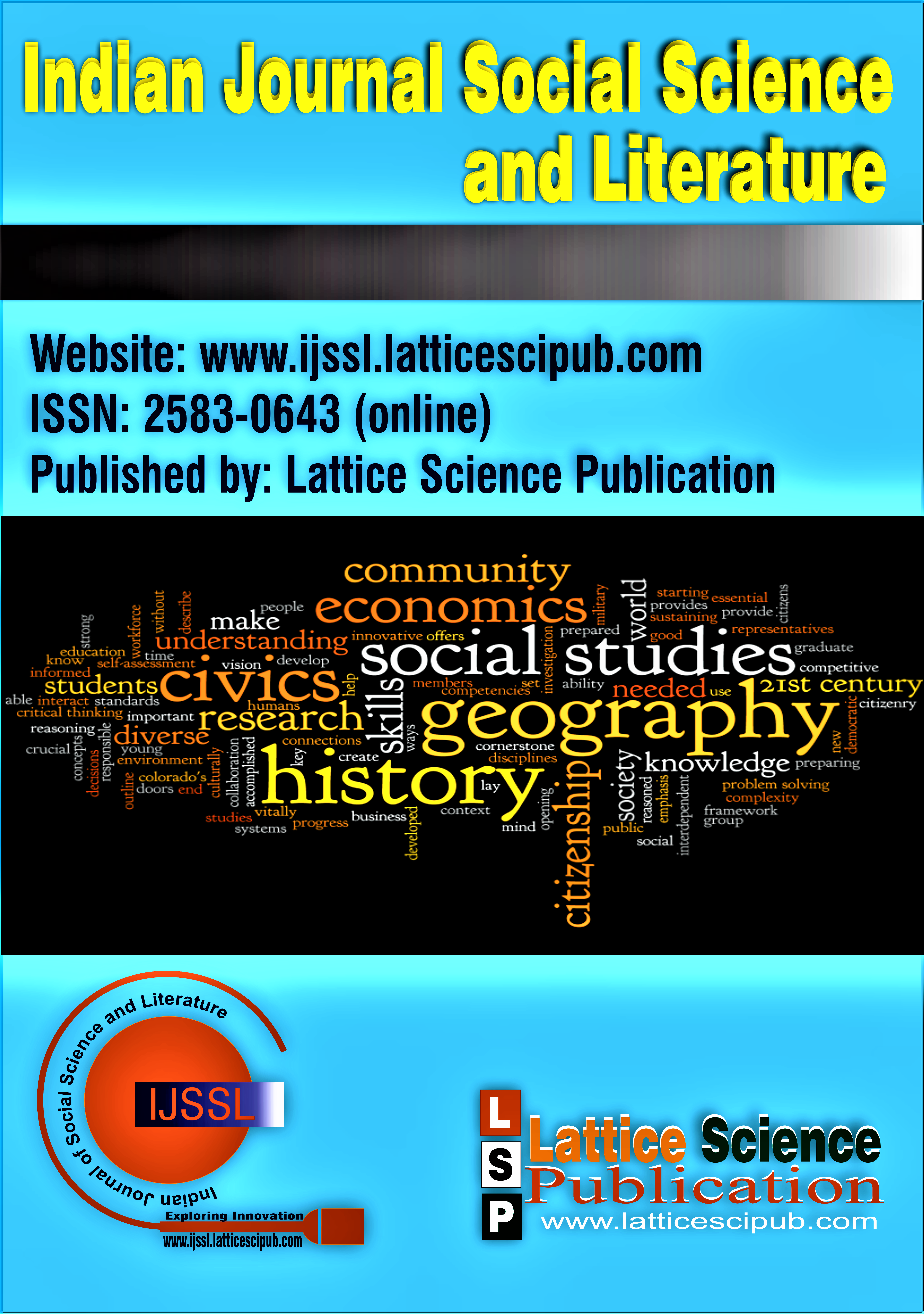New Reforms in Indian Higher Education: Rethinking the Education Model
Main Article Content
Abstract
The National Education Policy (NEP)-2020 will bring flexibility to the curriculum through a multidisciplinary and interdisciplinary approach, a new assessment process, resource empowerment, multiple exit options, and encouraging internationalization. Adopting an open curriculum with transdisciplinary course patterns, including flexibility in electives, has led to progress in skill development, holistic development, community engagement, technological integration, environmental education, and value-based education. Ranking and accreditation will have a significant impact on the quality of education and research. It is necessary to frame an education policy that will give better results in creativity, development of critical thinking, decision-making skills, and problem-solving abilities. The new reforms aim to enhance the quality and effectiveness of future-ready higher education institutions in India. In this paper, an attempt has been made to present various reforms in the Indian higher education system, its regulatory structure, and teaching pedagogy.
Downloads
Article Details

This work is licensed under a Creative Commons Attribution-NonCommercial-NoDerivatives 4.0 International License.
How to Cite
References
Shailaj Kumar Shrivastava. “Need for Reconstruction of Higher Education System in India”. International Journal of Innovative Research and Advance Studies (IJIRAS), Vol. 3, issue 9, 239-245, August 2016.
Ali, M.G., “Detailed review of national institute ranking framework (NIRF) India ranking including uncertainty and sensitivity”. International Journal of Education Research Review, 7,418-428, 2022. https://doi.org/10.24331/ijere.1164605
Chetan Singai, T.R. Kumaraswamy, Ajay Chandra. “Reforming Higher Education in India: In pursuit of Excellence”. 6th International Conference on Higher Education Advances (HEAd’20), Universitat Politecnica de Valencia, Valencia, 1209-1216, 2020. DOI: https://doi.org/10.4995/HEAd20.2020.11237
H.M. Naveen, “Establishment and operation of Academic Bank of Credits (ABC) in higher education”. International Journal of Engineering Applied Sciences and Technology (IJEAST), Vol 6, Issue 5 166-169, 2021. https://doi.org/10.33564/IJEAST.2021.v06i05.023
Aditi Deshpande. “Internationalisation of education: significance, challenges, strategies and potential benefits for the higher education sector in India”. Education and Society. 1 (1): 37-42, Oct 2023.
Shailaj Kumar Shrivastava, Chandan Shrivastava. “The Impact of Digitalization in Higher Educational Institutions”. International Journal of Soft Computing and Engineering (IJSCE), Vol.11, Issue 2, January 2022. DOI: 10.35940/ijsce. B3536.0111222, 7-11. https://doi.org/10.35940/ijsce
Indian Knowledge Systems (IKS), February. 2, 2024.https://iksindia.org/.
Shailaj Kumar Shrivastava, Chandan Shrivastava. “Emerging Software and Tools in Higher Education Institutions”. International Journal of Soft Computing and Engineering (IJSCE), Vol.13, Issue 6, January 2024, 1-6. DOI:10.35940/ijsce.F3620.13060124. https://doi.org/10.35940/ijsce.F3620.13060124
Shailaj Kumar Shrivastava, “Role of Educational Institution in promoting social awareness”. International Journal of Innovative Research and Advance Studies (IJIRAS), Volume 3, issue13, 24-26, Dec. 2016.
Shailaj Kumar Shrivastava. “Promotion of moral values through education”. International Journal of Research in Social Science (IJRSS), Vol. 7, Issue 6, 103-108, June 2017.
Sapna Sharm, Dr. Anamica. “Waste management practices are done in educational institutions worldwide: A Review based Study”. Journal of Critical Reviews, 7, 12, 4799-4803, 2020.
Banu, D.A. Shahira, S. Sheela, N. Muralimohan, N. Saranya, Amzad Barha Kolar, and V. Sri Santhya, “Importance and Benefits of Green audits to education institutions and Industrial sectors”. International Journal of Environment and Climate Change. 13(12) 349-56, 2023. https://doi.org/10.9734/ijecc/2023/v13i/23690
Al-Mahdawi, E. (2022). An Overview on Internationalisation within the United Kingdom Higher Education. In International Journal of Management and Humanities (Vol. 8, Issue 6, pp. 7–11). https://doi.org/10.35940/ijmh.f1423.018622
Kamalakar, Dr. G., & Kamala, Dr. K. (2023). New Dimension in Higher Education in India. In Indian Journal of Social Science and Literature (Vol. 1, Issue 4, pp. 27–33). https://doi.org/10.54105/ijssl.e1027.061422
Shrivastava, Dr. S. K., & Shrivastava, C. (2024). Emerging Software and Tools in Higher Education Institutions. In International Journal of Soft Computing and Engineering (Vol. 13, Issue 6, pp. 1–6). https://doi.org/10.35940/ijsce.f3620.13060124
Sari, N. Bt. M., & Faiz, Dr. N. S. Bt. M. (2020). Internationalization of Higher Education: The Activity-Process at Malaysian Technical University. In International Journal of Recent Technology and Engineering (IJRTE) (Vol. 8, Issue 6, pp. 2241–2247). https://doi.org/10.35940/ijrte.d9951.038620
Allayarova, S. N. (2019). Implementation of Modern Information Communication Technologies (ICT) in Higher Education Sector: International Experience and The Example of Uzbekistan. In International Journal of Innovative Technology and Exploring Engineering (Vol. 9, Issue 1, pp. 386–392). https://doi.org/10.35940/ijitee.a4146.119119





